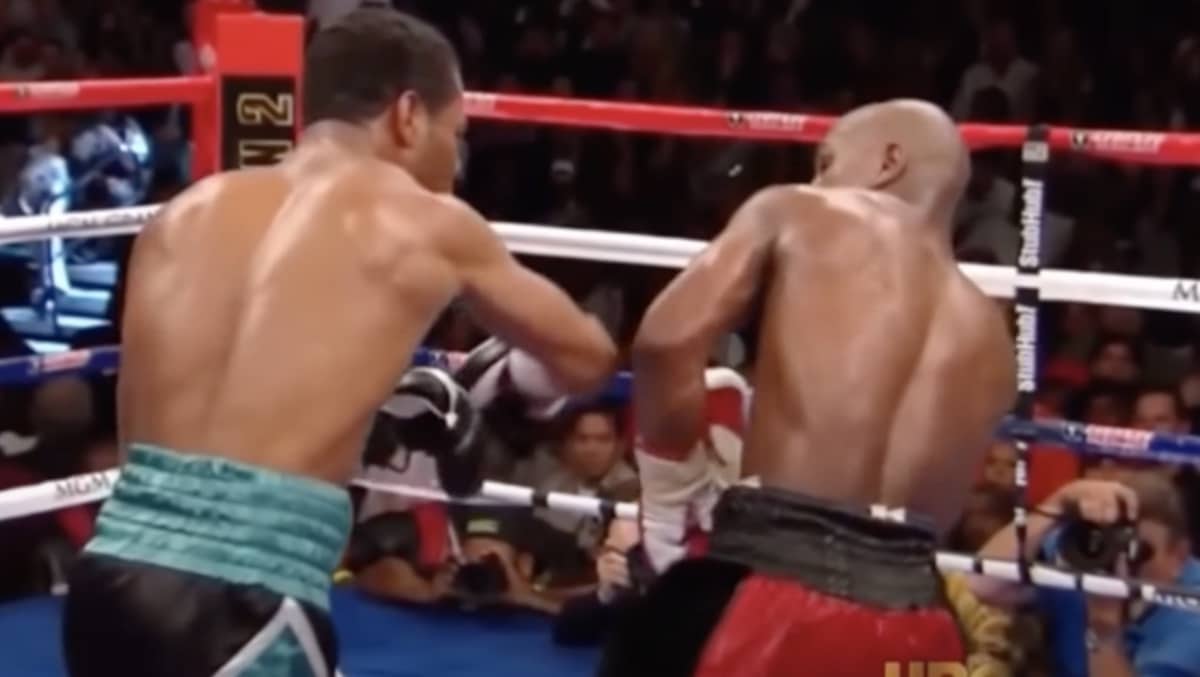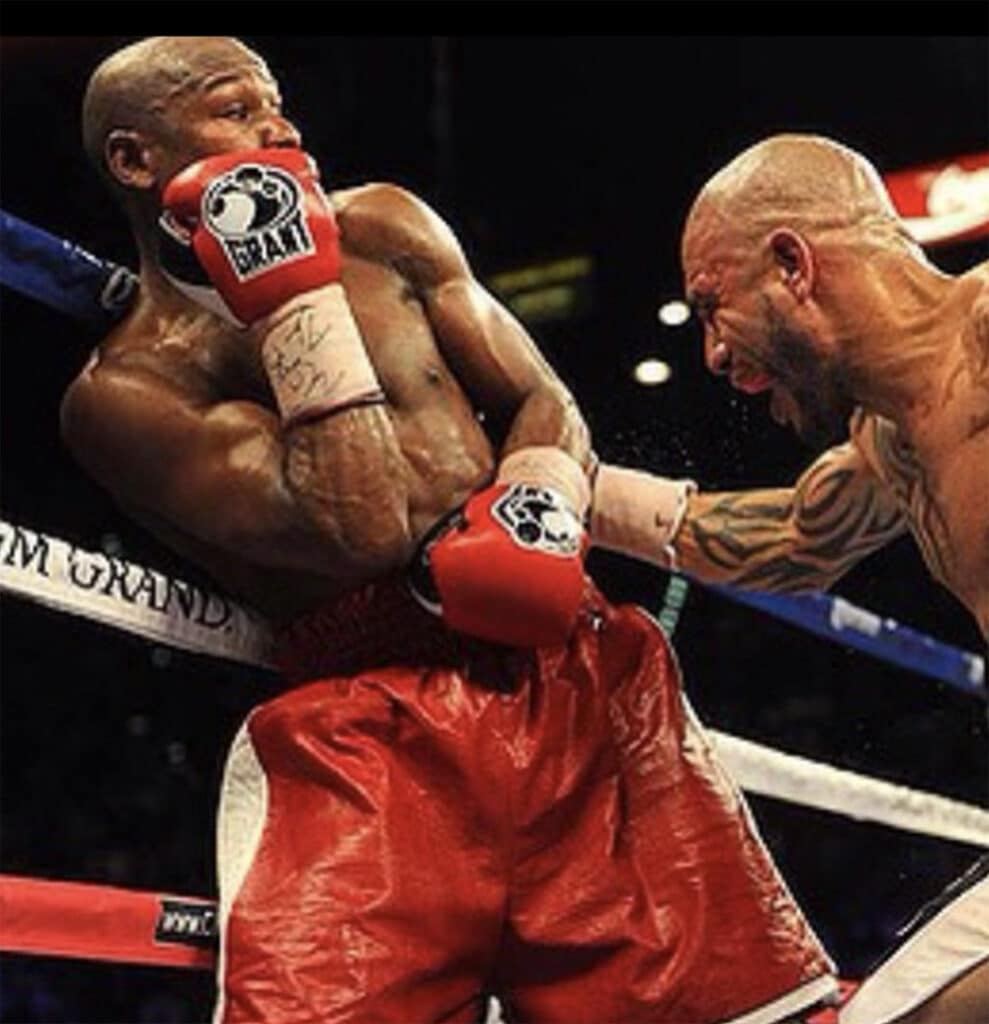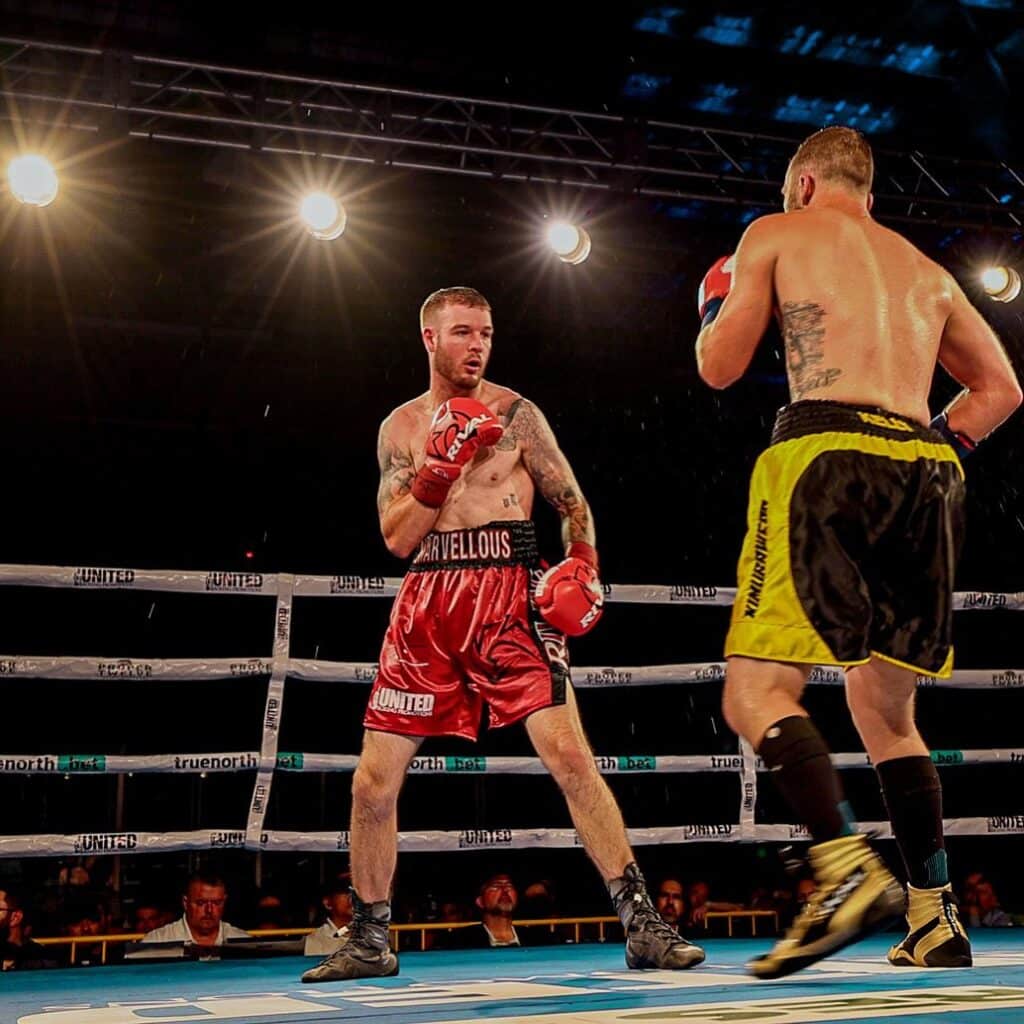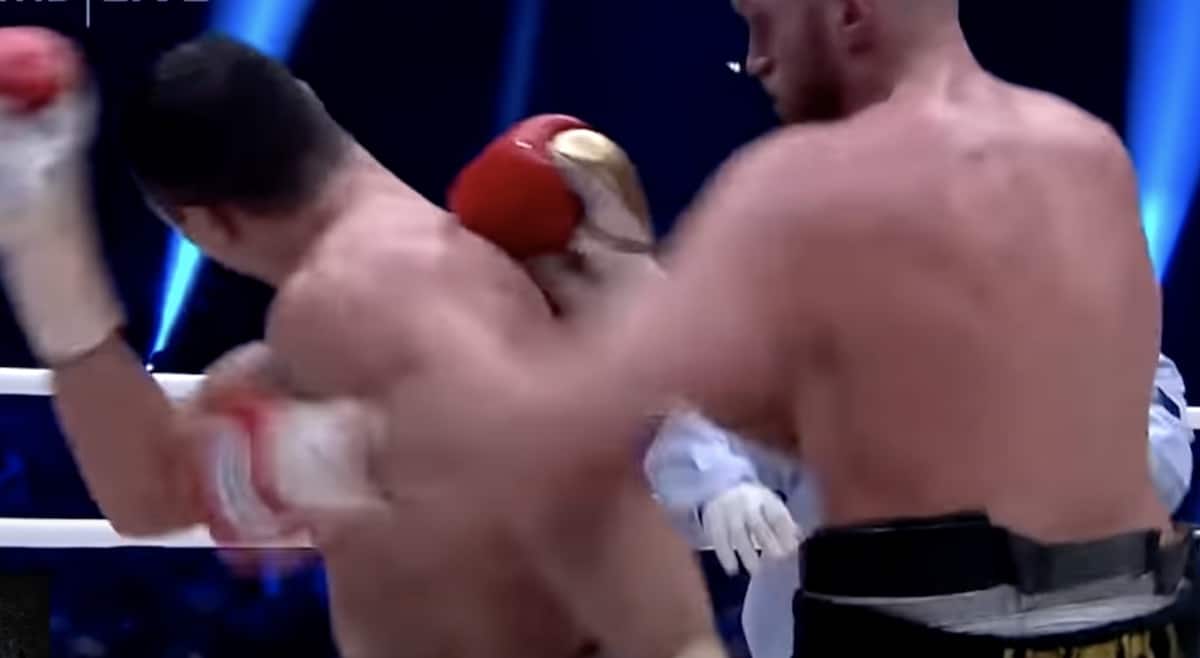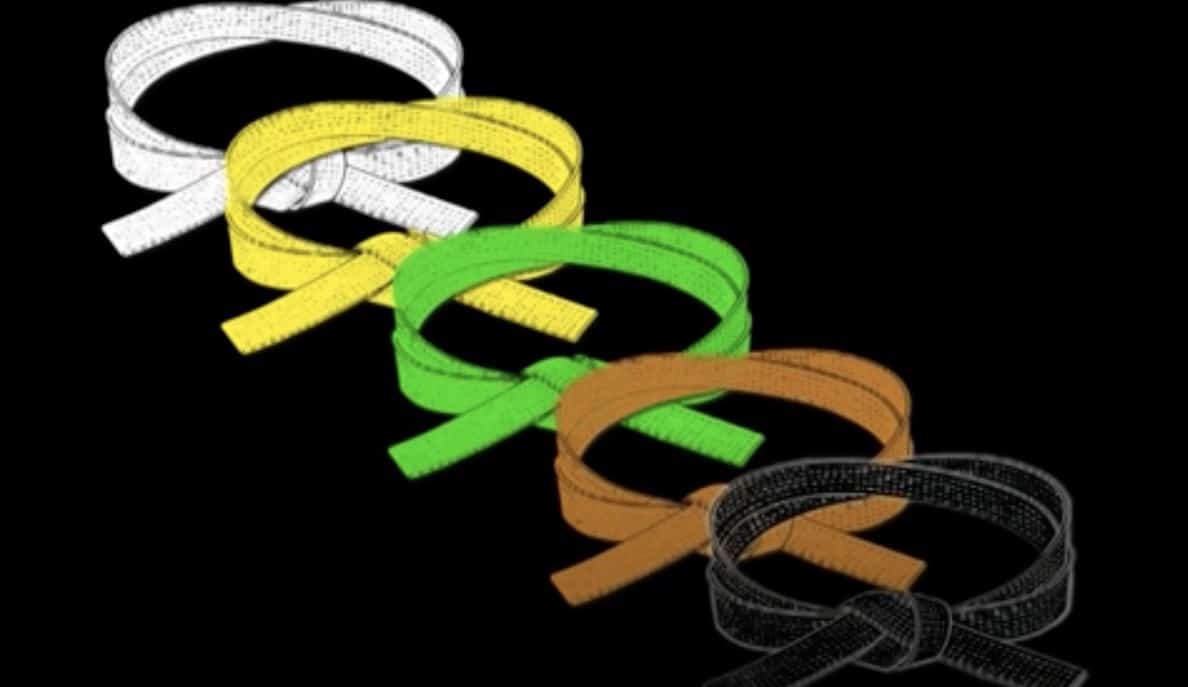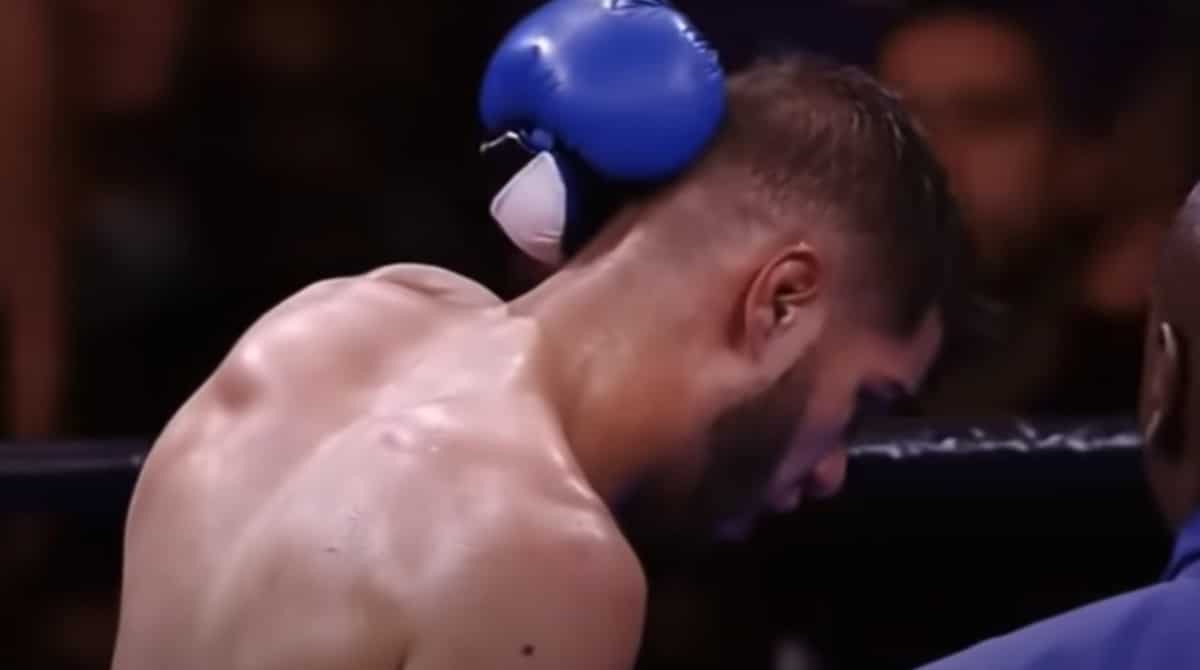
A term that you’ve probably heard before from either watching or training in combat sports is the term “rabbit punch.” A highly illegal technique in most sports that will result in a loss of points or immediate disqualification.
Let’s get into this striking technique and go over everything that you need to know about the rabbit punch. Going over why the rabbit punch is illegal, where the name comes from, and tragic stories from using these strikes.
What is a Rabbit Punch?
A rabbit punch is a type of hand strike that targets the back of an opponent’s head. Also, the base of the skull where your spine connects to your skull.
The term “rabbit punch” was first coined in 1915, which is used to kill rabbits. A person would strike a rabbit in the back of their head to instantly kill them.
Why is the Rabbit Punch Dangerous?
Just going by the definition of a rabbit punch, you can obviously guess that it’s an extremely dangerous strike. They not only pose the threat of permanent damage, but also death.
By striking at the base of the neck/skull, a fighter can paralyze their opponent by damaging their vertebrae. They could even disconnect their brain stem, which will cause instant death.
This is why rabbit punches are extremely dangerous and should never be thrown in practice or competition.
Is a Rabbit Punch Legal in Any Combat Sports?
There is not a sanctioned combat sport that allows rabbit punches in their rulesets. Whenever a referee or athletic commission official does a pre-fight rules meeting, they give their definition of a rabbit punch,
They will tell the fighters that they are allowed to strike their opponent from their nose to their airs. No types of strikes behind an opponent’s head are allowed in any combat sport that allow strikes.
Were Rabbit Punches Ever Legal?
The only time rabbit punches were allowed were in the early no-holds-barred events that the UFC used to run. Another promotion that allowed rabbit punches was the International Vale Tudo Championship.
Rabbit punches would be quickly outlawed in UFC events as rules were added during the evolution of the sport. The International Vale Tudo Championship would allow rabbit punches up until the year 2012.
Now the rabbit punch is illegal in all combat sports and rightly so.
What are the Penalties for Landing a Rabbit Punch?
Whenever a fighter lands a rabbit punch, the punishment is left up to the decision of a referee. Usually, they will either take a point or disqualify the fighter who threw the punch. Some more lenient referees may give a warning, which would be a heavily scrutinized decision.
If it is severe enough, a fighter may suffer a number of penalties after the match. They could subsequently be suspended, fined, and even have their fighter’s license revoked.
What Type of Punches are Considered Rabbit Punches?
Literally any type of punch that targets the back of a fighter’s neck or head is considered a rabbit punch. It could be straights, hooks, overhangs, cupping strikes, or even hammer fists.
Rabbit Punches in Boxing
In boxing, we generally see boxer’s land rabbit punches with looping punches, hooks, and cupping strikes. It all depends on the situation on what type of rabbit punch is used.
If an opponent is keeping tight guards, a fighter may try to land looping shots or hooks. Going around their opponent’s gloves to target behind their knee.
Whenever an opponent continuously ducks their head down, it’s not uncommon that a boxer strikes the back of their head. Throwing anything from hooks, overhangs, or cupping strikes to their neck to hurt an opponent.
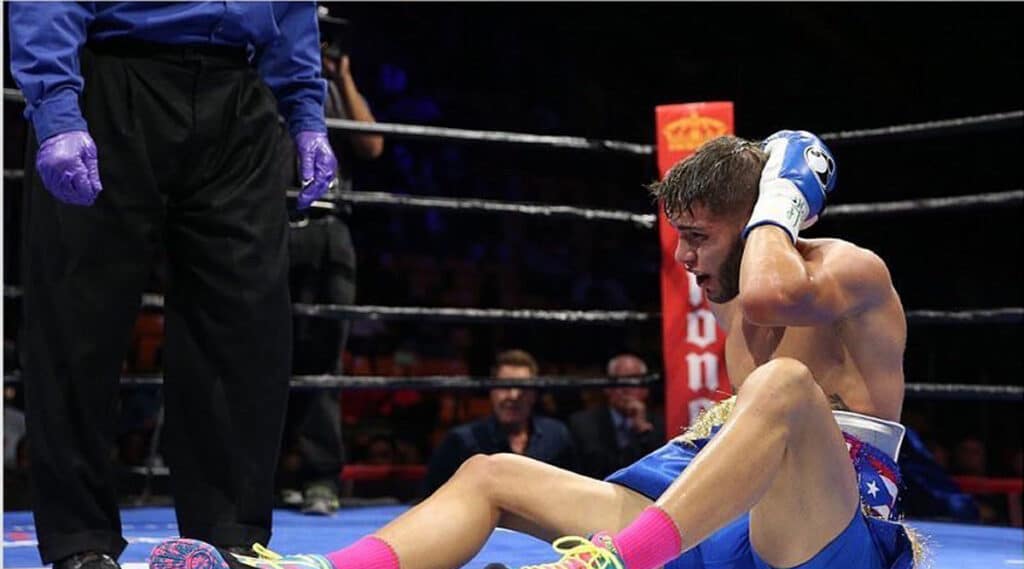

Rabbit Punches in MMA
Given that MMA is a more dimensional combat sport than boxing, this gives more openings for rabbit punches. Just like in boxing, an MMA fighter could possibly land a rabbit punch using a hook or overhand.
But rabbit punches in MMA are more likely to occur within a grappling situation. Especially when a fighter is using ground n pound.
Let’s say a fighter has their opponent in mount, and their opponent turns to give up their back. This opens for them to throw a wide variety of strikes to the back of their opponent’s head.
Anything from straight downward punches, hooks, and also hammerfists. A fighter will most likely be disqualified if they hit their opponent with a rabbit punch from this position.
Pritchard Colon
Probably the most known story that proves the danger of the rabbit punch is the story of Pritchard Colon. A young Puerto Rican boxer that would have his life destroyed from being hit with rabbit punches.
If you’ve scrolled through Instagram or Youtube, you have probably seen what Pritchard looks like now after the incident. But before that horrible event, Colon was a talented young prospect.
Pritchard Colon was a 16-0 professional boxer in the super welterweight division. He had the makings of a superstar and the good looks and charisma that brought more eyes to his matches.
The Fight
His last match was against Terrel Williams on October 17th, 2015. During this bout, Williams would land multiple rabbit punches to the back of Colon’s head.
Many of which went by without even a warning from the referee Joe Cooper. When Colon complained Cooper was heard responding with “you take care of it.”
Colon would later get deducted two points for a low blow after getting hit with more rabbit punches. He would then get knocked down after sustaining damage from the illegal strikes.
Pritchard was heard telling the doctor Richard Ashby that he felt dizzy, but Ashby let the fight continue.
After the ninth round, Colon would be disqualified after his corner inadvertently removed his gloves. They thought it was the end of the bout, but it was actually the end of the ninth round.
Colon’s corner tried to talk to him, but said he was incoherent and began vomiting in the back. He was taken to the emergency room and fell into a 221 day coma.
The Aftermath
The damage from the fight left Prichard Colon in a persistent vegetative state for. For around two years, he was bedridden and nearly unresponsive. Colon’s mother Nieves Colon would sue Richard Ashby, but the lawsuit has never been settled.
Since 2018, Nieves has constantly posted updates at her son’s attempts to recover. Pritchard can now communicate through a computer, but will probably never walk again.
The Push For Stricter Punishment on the Rabbit Punch
The story of Pritchard Colon is just one of many that suffered from the effects of rabbit punches. Many throughout the 100+ year history of combat sport have suffered permanent damage from these strikes.
After the incident, there has been a push for stricter punishment on those who use a rabbit punch. Many top boxing councils and federations have promised stern action in the future for fighters that use rabbit punches.
We all should agree that harsh punishment should be used for any fighter that used these illegal strikes. Rabbit punches can cripple or kill a fighter, which is why there must be harsh punishment enforced whenever they’re used.
